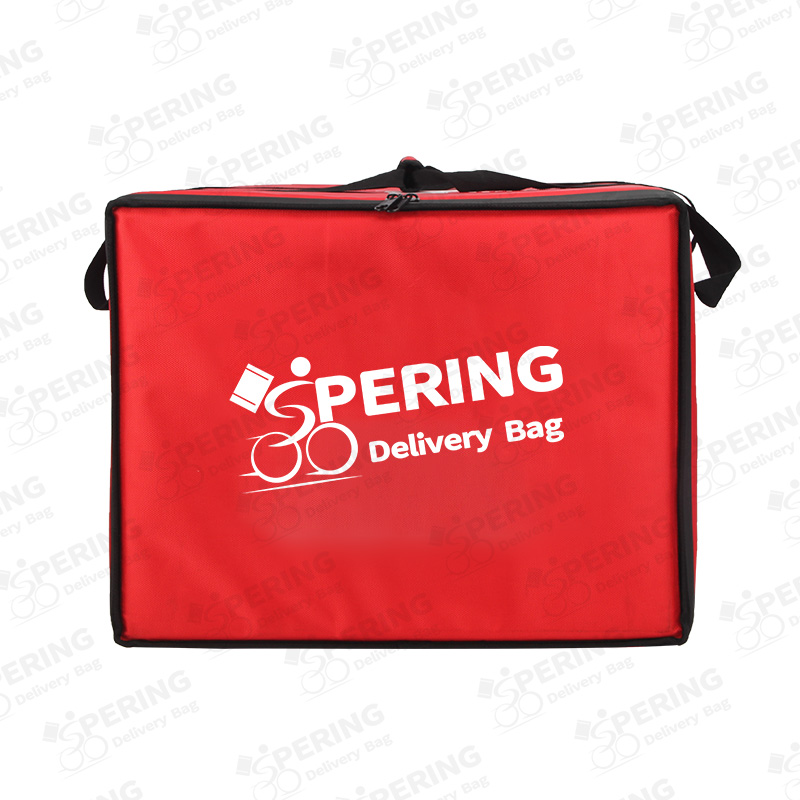




Creating a custom food delivery bag involves several key considerations to ensure it meets the needs
of both the delivery service and the end customers. Here are some steps and factors to consider:
Insulation:
Use high-quality insulating materials to maintain food temperature (hot or cold) during transit.
Consider multi-layer insulation for better performance.
Size and Compartments:
Design different sizes to accommodate various types of orders (e.g., small, medium, large).
Include compartments or adjustable dividers to separate different items and prevent spillage.
Material:
Choose durable, waterproof, and easy-to-clean materials like nylon, polyester, or PVC.
Reinforced stitching and high-quality zippers for longevity.
Accessibility:
Wide openings or clamshell designs for easy packing and unpacking.
Transparent pockets for order receipts or delivery notes.
Carrying Options:
Padded shoulder straps and handles for comfortable carrying.
Consider adding backpack straps for cyclists or motorbike couriers.
Safety and Visibility:
Reflective strips or bright colors for visibility during nighttime deliveries.
Secure closures like Velcro, buckles, or magnetic snaps to keep food secure.
Branding:
Customizable with logos, colors, and branding elements.
Offer a printing or embroidery service for personalized touches.
Manufacturer Selection:
Find a reliable manufacturer with experience in producing insulated bags.
Consider local vs. overseas production based on budget, quality control, and shipping times.
Prototype and Testing:
Develop a prototype and test it in real-world delivery scenarios.
Get feedback from delivery personnel and make necessary adjustments.
Bulk Orders:
Order in bulk to reduce costs per unit.
Ensure quality control checks during production to maintain standards.
Target Audience:
Market to restaurants, food delivery services, and individual couriers.
Highlight the benefits like temperature retention, durability, and ease of use.
Sales Channels:
Sell through online platforms, direct sales, or wholesale distributors.
Consider partnerships with food delivery apps or services.
Pricing Strategy:
Price competitively while ensuring a good profit margin.
Offer discounts for bulk orders or long-term contracts.
Customer Support:
Provide excellent customer service and warranty for defects.
Gather customer feedback to continuously improve the product.
Eco-friendly Materials:
Explore options for sustainable materials and manufacturing processes.
Promote the environmental benefits of using your delivery bags.
Recycling Programs:
Implement a recycling or take-back program for old or damaged bags.
Insulated Inner Lining: Keeps food at the desired temperature.
Waterproof Exterior: Protects against rain and spills.
Padded Shoulder Straps: Comfort for the delivery person.
Reflective Strips: Safety during night deliveries.
Custom Branding: Your logo and colors.
Creating a custom food delivery bag requires careful consideration of design,
materials, production, and marketing strategies.
By focusing on quality, usability, and customer needs,
you can develop a product that stands out in the market and meets the demands of modern food delivery services.
Add : 15th, Fuyu Road, Qiling Village,Shiling Town ,Huadu District ,Guangzhou
+86 186-8037-6156(Iverson Cao)
Iverson@peringbags.com